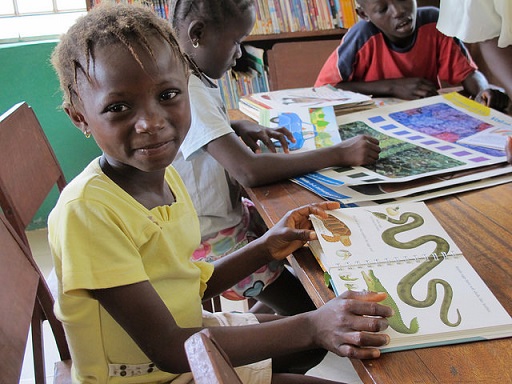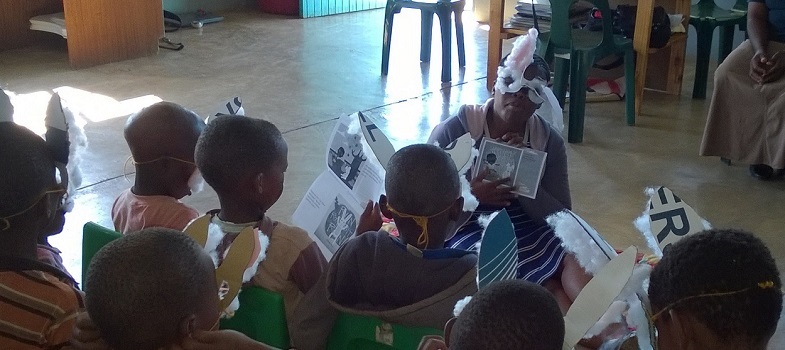Storybooks as resources

Storybooks can be in the form of picture books (where the reader makes up the story) word-books (one word to one picture), simple graded readers, and ‘decodable’ readers, which are specifically created to teach early reading though simple, repeated words and sentence forms. Storybooks can also be creative, with interesting and enjoyable pictures and stories. Storybooks also follow a structure that supports children, making them want to turn the page to find out ‘what happens next’.
Activity 2.4: Thinking about storybooks
Make a list in your study notebook of the first books you remember reading yourself or that someone read to you – in school, at home or in another place, such as church. Even if you do not remember the titles of the books, try to remember what they were about.
- What are the main features of the books you remember when you were an early reader?
- Why did you like them?
- Why do you think you can still remember them?
Discussion
These features may include, for instance:
- pictures that tell a story without words or with only a few words
- pictures that match the words exactly
- familiar situations such as family life, farming or shopping
- humour
- complex language you followed along as someone read to you
- moral or religious messages
- explanations of how things happen or why things are as they are
- traditions or history
- short sentences and simple vocabulary
- large print
- rhyming words
- letters of the alphabet.
When children read storybooks, they:
- learn how to handle books with care
- understand the power of stories and reading
- gain confidence as readers
- learn about their traditions
- develop understanding of dilemmas and problems
- learn word and sentence patterns they can apply to other reading
- learn to use images to interpret words
- learn vocabulary and collocations
- learn to recognise familiar and high-frequency words and phrases that occur regularly in reading – learning just 13 of the most frequently used words enables children to read 25% of any text.
(Note: A collocation is two or more words that often go together and sound ‘right’. For example, we say ‘a fast train’, not a ‘quick train’; we say a ‘quick meal’, not a ‘fast meal’. High-frequency words occur most frequently in books; for example, ‘and’, ‘can, ‘put’ and ‘it’. Some high-frequency words do not follow the usual phonic rules and so they can be hard to read in the early stages. You may call these words tricky or sight words. They are words that children need to learn by sight; for example, ‘the’, ‘look’ and ‘to’.)
What resources do you need to support early literacy and reading?



